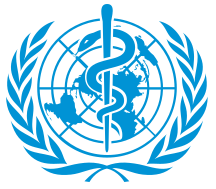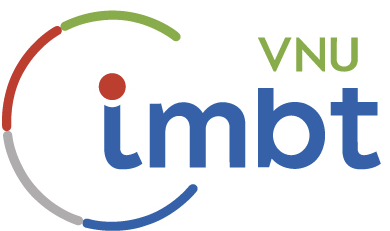
Sustainable dengue prevention and control through a comprehensive integrated approach: the Sri Lankan perspective / Hasitha Tissera;Nimalka Pannila-Hetti;Preshila Samaraweera;Jayantha Weeraman;Paba Palihawadana;Ananda Amarasinghe
Tác giả : Hasitha Tissera;Nimalka Pannila-Hetti;Preshila Samaraweera;Jayantha Weeraman;Paba Palihawadana;Ananda Amarasinghe
Nhà xuất bản : World Health Organization. Regional Office for South-East Asia
Năm xuất bản : 2016
Chủ đề : 1. dengue. 2. dengue epidemic. 3. dengue prevention and control strategies. 4. Sri Lanka. 5. sustainable integrated dengue control. 6. Journal / periodical articles.
Thông tin chi tiết
| Tóm tắt : | Dengue is a leading public health problem in Sri Lanka. All 26 districts and allage groups are affected, with high disease transmission; the estimated averageannual incidence is 175/100 000 population. Harnessing the World HealthOrganization Global strategy for dengue prevention and control, 2012–2020, SriLanka has pledged in its National Strategic Framework to achieve a mortality fromdengue below 0.1% and to reduce morbidity by 50% (from the average of thelast 5 years) by 2020. Turning points in the country’s dengue-control programmehave been the restructuring and restrategizing of the core functions; this hasinvolved establishment of a separate dengue-control unit to coordinate integratedvector management, and creation of a presidential task force. There has beengreat progress in disease surveillance, clinical management and vector control.Enhanced real-time surveillance for early warning allows ample preparednessfor an outbreak. National guidelines with enhanced diagnostics have significantlyimproved clinical management of dengue, reducing the case-fatality rate to 0.2%.Proactive integrated vector management, with multisector partnership, has createda positive vector-control environment; however, sustaining this momentum is achallenge. Robust surveillance, evidence-based clinical management, sustainablevector control and effective communication are key strategies that will beimplemented to achieve set targets. Improved early detection and a standardizedtreatment protocol with enhanced diagnostics at all medical care institutions willlead to further reduction in mortality. Making the maximum effort to minimizeoutbreaks through sustainable vector control in the three dimensions of riskmapping, innovation and risk modification will enable a reduction in morbidity |
Thông tin dữ liệu nguồn
| Thư viện | Ký hiệu xếp giá | Dữ liệu nguồn |
|---|---|---|
 Tổ chức y tế thế giới
Tổ chức y tế thế giới
|
|
https://iris.who.int/handle/10665/329657 |
 Tài liệu điện tử
Tài liệu điện tử 

 Đại học Công nghệ - ĐHQGHN
Đại học Công nghệ - ĐHQGHN  Đại học Giáo dục - ĐHQGHN
Đại học Giáo dục - ĐHQGHN  Đại học khoa học tự nhiên - ĐHQGHN
Đại học khoa học tự nhiên - ĐHQGHN  Đại học Khoa học Xã hội và Nhân văn - ĐHQGHN
Đại học Khoa học Xã hội và Nhân văn - ĐHQGHN  Đại học Kinh tế - ĐHQGHN
Đại học Kinh tế - ĐHQGHN  Đại học Ngoại ngữ - ĐHQGHN
Đại học Ngoại ngữ - ĐHQGHN  Đại học quốc gia Hà Nội
Đại học quốc gia Hà Nội  Đại học Y - Dược - ĐHQGHN
Đại học Y - Dược - ĐHQGHN  Học Viện Hàng Không Việt Nam
Học Viện Hàng Không Việt Nam  Thư viện đại học Cần Thơ
Thư viện đại học Cần Thơ  Thư viện Huyện Bình Chánh - TVKHTH TP.HCM
Thư viện Huyện Bình Chánh - TVKHTH TP.HCM  Thư viện huyện Bình Minh - TV Vĩnh Long
Thư viện huyện Bình Minh - TV Vĩnh Long  Thư viện huyện Bình Tân - TV Vĩnh Long
Thư viện huyện Bình Tân - TV Vĩnh Long  Thư viện Huyện Cần Giờ - TVKHTH TP.HCM
Thư viện Huyện Cần Giờ - TVKHTH TP.HCM  Thư viện Huyện Củ Chi - TVKHTH TP.HCM
Thư viện Huyện Củ Chi - TVKHTH TP.HCM  Thư viện Huyện Hóc Môn - TVKHTH TP.HCM
Thư viện Huyện Hóc Môn - TVKHTH TP.HCM  Thư viện huyện Long Hồ - TV Vĩnh Long
Thư viện huyện Long Hồ - TV Vĩnh Long  Thư viện huyện Mang Thít - TV Vĩnh Long
Thư viện huyện Mang Thít - TV Vĩnh Long  Thư viện Huyện Nhà Bè - TVKHTH TP.HCM
Thư viện Huyện Nhà Bè - TVKHTH TP.HCM  Thư viện huyện Tam Bình - TV Vĩnh Long
Thư viện huyện Tam Bình - TV Vĩnh Long  Thư viện huyện Trà Ôn - TV Vĩnh Long
Thư viện huyện Trà Ôn - TV Vĩnh Long  Thư viện Khoa học Tổng hợp TP.HCM
Thư viện Khoa học Tổng hợp TP.HCM  Thư viện quận 1 - TVKHTH TP.HCM
Thư viện quận 1 - TVKHTH TP.HCM  Thư viện quận 10 - TVKHTH TP.HCM
Thư viện quận 10 - TVKHTH TP.HCM  Thư viện quận 11 - TVKHTH TP.HCM
Thư viện quận 11 - TVKHTH TP.HCM  Thư viện quận 12 - TVKHTH TP.HCM
Thư viện quận 12 - TVKHTH TP.HCM  Thư viện quận 2 - TVKHTH TP.HCM
Thư viện quận 2 - TVKHTH TP.HCM  Thư viện quận 3 - TVKHTH TP.HCM
Thư viện quận 3 - TVKHTH TP.HCM  Thư viện quận 4 - TVKHTH TP.HCM
Thư viện quận 4 - TVKHTH TP.HCM  Thư viện quận 5 - TVKHTH TP.HCM
Thư viện quận 5 - TVKHTH TP.HCM  Thư viện quận 6 - TVKHTH TP.HCM
Thư viện quận 6 - TVKHTH TP.HCM  Thư viện quận 7 - TVKHTH TP.HCM
Thư viện quận 7 - TVKHTH TP.HCM  Thư viện quận 8 - TVKHTH TP.HCM
Thư viện quận 8 - TVKHTH TP.HCM  Thư viện quận Bình Tân - TVKHTH TP.HCM
Thư viện quận Bình Tân - TVKHTH TP.HCM  Thư viện quận Bình Thạnh - TVKHTH TP.HCM
Thư viện quận Bình Thạnh - TVKHTH TP.HCM  Thư viện quận Gò Vấp - TVKHTH TP.HCM
Thư viện quận Gò Vấp - TVKHTH TP.HCM  Thư viện quận Phú Nhuận - TVKHTH TP.HCM
Thư viện quận Phú Nhuận - TVKHTH TP.HCM  Thư viện quận Tân Bình - TVKHTH TP.HCM
Thư viện quận Tân Bình - TVKHTH TP.HCM  Thư viện quận Tân Phú - TVKHTH TP.HCM
Thư viện quận Tân Phú - TVKHTH TP.HCM  Thư viện Quốc gia Việt Nam
Thư viện Quốc gia Việt Nam  Thư viện thành phố Thủ Đức (cơ sở 1) - TVKHTH TP.HCM
Thư viện thành phố Thủ Đức (cơ sở 1) - TVKHTH TP.HCM  Thư viện thành phố Thủ Đức (cơ sở 2) - TVKHTH TP.HCM
Thư viện thành phố Thủ Đức (cơ sở 2) - TVKHTH TP.HCM  Thư Viện Tỉnh An Giang
Thư Viện Tỉnh An Giang  Thư viện tỉnh Vĩnh Long
Thư viện tỉnh Vĩnh Long  Trung tâm giáo dục quốc phòng và An ninh - ĐHQGHN
Trung tâm giáo dục quốc phòng và An ninh - ĐHQGHN  Trung tâm Hỗ trợ Sinh viên - ĐHQGHN
Trung tâm Hỗ trợ Sinh viên - ĐHQGHN  Trường Đại học Luật - ĐHQGHN
Trường Đại học Luật - ĐHQGHN  Trường Khoa học liên ngành và nghệ thuật - ĐHQGHN
Trường Khoa học liên ngành và nghệ thuật - ĐHQGHN  Trường Quản trị và Kinh doanh - ĐHQGHN
Trường Quản trị và Kinh doanh - ĐHQGHN  Viện Công nghệ Thông tin - ĐHQGHN
Viện Công nghệ Thông tin - ĐHQGHN  Viện Đảm bảo chất lượng giáo dục - ĐHQGHN
Viện Đảm bảo chất lượng giáo dục - ĐHQGHN  Viện Quốc tế Pháp ngữ - ĐHQGHN
Viện Quốc tế Pháp ngữ - ĐHQGHN  Viện Tài nguyên và Môi trường - ĐHQGHN
Viện Tài nguyên và Môi trường - ĐHQGHN  Viện Vi sinh vật và Công nghệ Sinh học - ĐHQGHN
Viện Vi sinh vật và Công nghệ Sinh học - ĐHQGHN  Viện Việt Nam học và Khoa học phát triển - ĐHQGHN
Viện Việt Nam học và Khoa học phát triển - ĐHQGHN